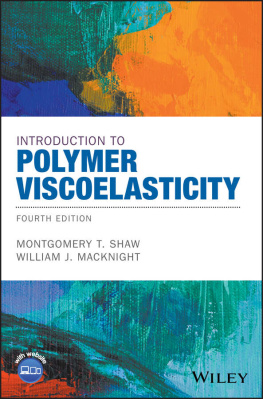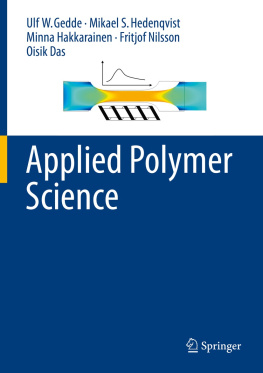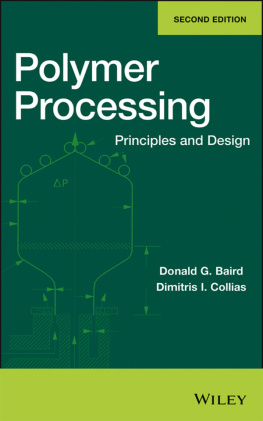About This eBook
ePUB is an open, industry-standard format for eBooks. However, support of ePUB and its many features varies across reading devices and applications. Use your device or app settings to customize the presentation to your liking. Settings that you can customize often include font, font size, single or double column, landscape or portrait mode, and figures that you can click or tap to enlarge. For additional information about the settings and features on your reading device or app, visit the device manufacturers Web site.
Many titles include programming code or configuration examples. To optimize the presentation of these elements, view the eBook in single-column, landscape mode and adjust the font size to the smallest setting. In addition to presenting code and configurations in the reflowable text format, we have included images of the code that mimic the presentation found in the print book; therefore, where the reflowable format may compromise the presentation of the code listing, you will see a Click here to view code image link. Click the link to view the print-fidelity code image. To return to the previous page viewed, click the Back button on your device or app.
Polymer Science and Technology
Third Edition
Joel R. Fried

Upper Saddle River, NJ Boston Indianapolis San Francisco
New York Toronto Montreal London Munich Paris Madrid
Capetown Sydney Tokyo Singapore Mexico City
Many of the designations used by manufacturers and sellers to distinguish their products are claimed as trademarks. Where those designations appear in this book, and the publisher was aware of a trademark claim, the designations have been printed with initial capital letters or in all capitals.
The author and publisher have taken care in the preparation of this book, but make no expressed or implied warranty of any kind and assume no responsibility for errors or omissions. No liability is assumed for incidental or consequential damages in connection with or arising out of the use of the information or programs contained herein.
For information about buying this title in bulk quantities, or for special sales opportunities (which may include electronic versions; custom cover designs; and content particular to your business, training goals, marketing focus, or branding interests), please contact our corporate sales department at or (800) 382-3419.
For government sales inquiries, please contact .
For questions about sales outside the U.S., please contact .
Visit us on the Web: informit.com/aw
Library of Congress Cataloging-in-Publication Data
Fried, Joel R.
Polymer science and technology / Joel R. Fried.Third edition.
pages cm
Includes bibliographical references and index.
ISBN 978-0-13-703955-5 (hardcover : alk. paper)
1. Polymers. 2. Polymerization. I. Title.
QD381.F73 2014
668.9dc23 2014000967
Copyright 2014 Pearson Education, Inc.
All rights reserved. Printed in the United States of America. This publication is protected by copyright, and permission must be obtained from the publisher prior to any prohibited reproduction, storage in a retrieval system, or transmission in any form or by any means, electronic, mechanical, photocopying, recording, or likewise. To obtain permission to use material from this work, please submit a written request to Pearson Education, Inc., Permissions Department, One Lake Street, Upper Saddle River, New Jersey 07458, or you may fax your request to (201) 236-3290.
ISBN-13: 978-0-13-703955-5
ISBN-10: 0-13-703955-7
Text printed in the United States on recycled paper at Courier Corporation in Westford, Massachusetts.
First printing, May 2014
To my parents, who provided the opportunities,
support, and guidance, and to my wife, Ava, and sons,
Marc and Aaron, for their love, patience, and
understanding.
Preface
Polymer Science and Technology, Third Edition, provides new and expanded coverage in a number of areas of contemporary interest in polymer science and technology. In particular, , on polymers for advanced technologies. In addition, an entirely new chapter on correlations and simulation methods in polymer science has been added. This new chapter includes expanded treatment of group-correlation methods to predict polymer properties that has previously appeared in a number of earlier chapters in the second edition. Totally new is the inclusion of topological indices and artificial neural networks to predict properties. For the first time in an introductory polymer textbook, the fundamentals and applications of computational polymer science including the use of molecular dynamics and Monte Carlo methods are presented with a number of examples and exercise problems.
Joel R. Fried
Tallahassee, Florida
About the Cover Illustration
The cover illustration shows a molecular simulation of a blend of 37 wt% of functionalized C60 fullerene, PCBM, (space-filling representation) in an amorphous cell containing a thiophene copolymer. This system has been reported to provide attractive photovoltaic properties for polymeric photovoltaic cells. Simulations of polymeric systems are described in of this third edition.
Preface to the Second Edition
The second edition provides new and expanded coverage of important topics in polymer science and engineering and includes additional example calculations, homework problems, and bibliographic references. Additional topics in the treatment of polymer synthesis (.
Although the intended audience for this text is advanced undergraduates and graduate students in chemical engineering, the coverage of polymer science fundamentals describes polymers used in areas of advanced technology including membrane separations, electrolytes for batteries and fuel cells, controlled drug release, nonlinear optical applications, and light-emitting diodes and displays. This coverage may be used as reference material for scientists and engineers and provides a basis for short courses in such areas as membrane science and technology and polymer physics.
Joel R. Fried
Cincinnati, Ohio
Preface to the First Edition
At least dozens of good introductory textbooks on polymer science and engineering are now available. Why then has yet another book been written? The decision was based on my belief that none of the available texts fully address the needs of students in chemical engineering. It is not that chemical engineers are a rare breed, but rather that they have special training in areas of thermodynamics and transport phenomena that is seldom challenged by texts designed primarily for students of chemistry or materials science. This has been a frustration of mine and of many of my students for the past 15 years during which I have taught an introductory course, Polymer Technology, to some 350 chemical engineering seniors. In response to this perceived need, I had written nine review articles that appeared in the SPE publication Plastics Engineering from 1982 to 1984. These served as a hard copy for my students to supplement their classroom notes but fell short of a complete solution.
In writing this text, it was my objective to first provide the basic building blocks of polymer science and engineering by coverage of fundamental polymer chemistry and materials topics given in . In all, this has been an ambitious undertaking and I hope that I have succeeded in at least some of these goals.
Although the intended audience for this text is advanced undergraduates and graduate students in chemical engineering, the coverage of polymer science fundamentals (, intended as survey chapters of the principal categories of polymerscommodity thermoplastics and fibers, network polymers (elastomers and thermoplastics), and engineering and specialty polymersmay be included to supplement and reinforce the material presented in the chapters on fundamentals and should serve as a useful reference source for the practicing scientist or engineer in the plastics industry.







